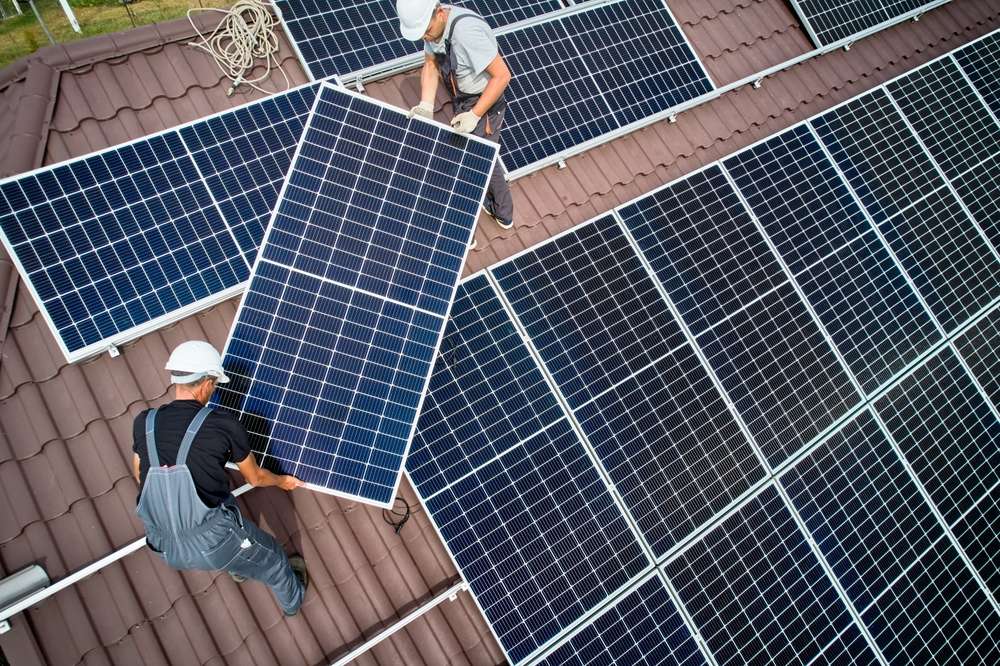Solar Roof Guide: Solar Panels for Home Improvement
A solar roof combines roofing materials and photovoltaic technology to turn sunlight into electricity while protecting your home. More than a typical retrofit of rooftop solar panels, a solar roof can mean integrated, low-profile modules or sleek replacement tiles that match your roofline. This article explains how solar roofs work, how they relate to traditional solar panels, their role in renewable energy goals, what they mean for home improvement, and what to expect during roof installation.

What is a solar roof?
A solar roof is a roofing solution that integrates photovoltaic (PV) cells into the roof itself—either as dedicated solar shingles/tiles or as low-profile panels installed flush with roofing materials. Unlike rack-mounted panels, integrated systems aim to be more aesthetic and, in some cases, replace the underlying roofing material. Solar roofs can vary in efficiency, warranty, and appearance. When considering one, evaluate durability, energy output, and whether the product replaces your current roof or simply mounts on top of it.
How do solar panels integrate with roofing?
Traditional solar panels are mounted on racks above an existing roof, while solar roof systems often replace or become the roof covering. Integration affects ventilation, water-shedding, and structural load. Proper flashing and waterproofing are crucial where electrical connectors pass through the roof plane. Many installers use a hybrid approach—replacing only sections of roofing with solar tiles or placing thin-film modules that resemble conventional shingles. Compatibility with attic ventilation and existing roof pitch will influence which approach works best for your home.
How does this support renewable energy goals?
Solar roofs contribute to renewable energy adoption by decentralizing electricity generation and reducing dependence on fossil-fuel-based grid power. On-site generation can lower household carbon footprints, especially when paired with energy storage systems that time-shift solar output for evening use. Even modest systems contribute to grid resilience and can reduce peak demand strains. For communities, widespread adoption supports local renewable energy targets and can complement utility-scale renewables by shaving local consumption peaks.
Is a solar roof a good home improvement?
As a home improvement, a solar roof can add long-term value by lowering utility bills, improving resale appeal, and modernizing a property’s aesthetic. Benefits depend on site-specific factors: roof orientation, shading, local climate, and energy needs. Integrated solar roofing might offer a cleaner look than rack-mounted panels, which many buyers appreciate. Consider warranty terms (both roofing and PV), expected lifespan, and maintenance needs. Homeowners should weigh aesthetic and functional gains against initial investment, roof condition, and potential permitting or homeowners association requirements.
What to expect during roof installation?
Roof installation for integrated solar roofing involves additional coordination compared with a standard roof replacement. Expect an initial site assessment to evaluate structural integrity, shading analysis, and electrical planning. Permits and inspections are typically required. Installation steps include removing old roofing (if replacing), installing underlayment, mounting integrated PV tiles or modules, making electrical connections, and final flashing to ensure waterproofing. Work can take several days to weeks depending on system size. Choose licensed installers with experience in both roofing and PV to coordinate warranties and ensure compliance with local codes and local services availability.
Conclusion
A solar roof blends form and function: it protects your home while producing clean energy. Whether you opt for integrated solar tiles or conventional rooftop solar panels, the right system depends on your roof’s condition, aesthetic preferences, and energy goals. Careful planning—covering site assessment, installer qualifications, and warranty details—will help you decide how a solar roof fits into your broader home improvement and renewable energy plans.






